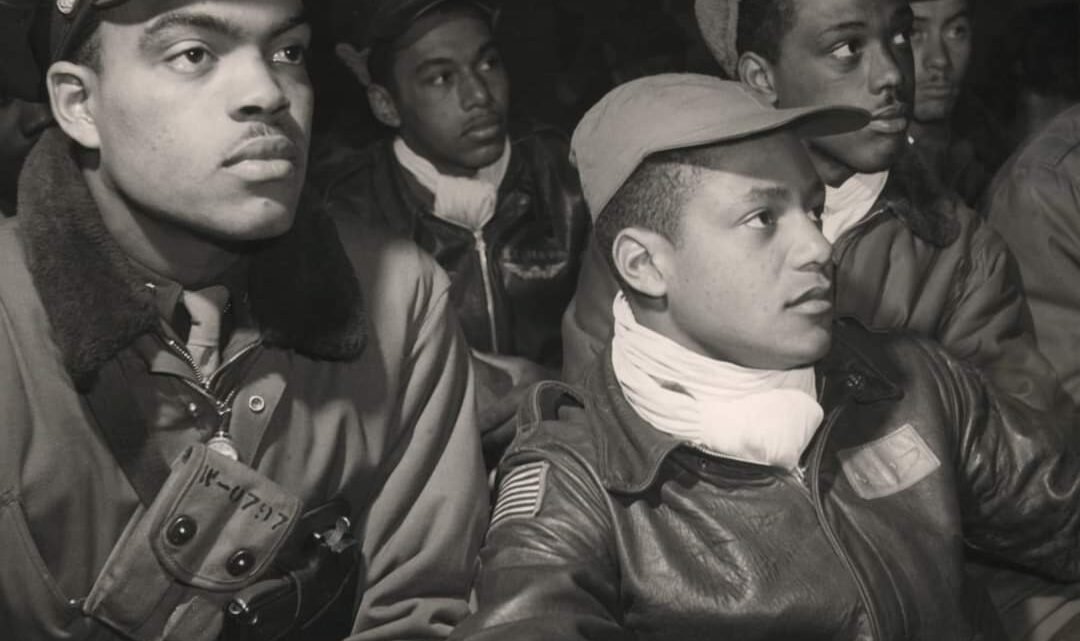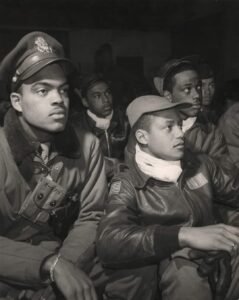
The military history of African Americans spans from the arrival of the first enslaved Africans during the colonial history of the United States to the present day.
In every war fought by or within the United States, African Americans participated, including the Revolutionary War, the War of 1812, the Mexican–American War, the Civil War, the Spanish–American War, World War I, World War II, the Korean War, the Vietnam War, the Gulf War, the War in Afghanistan, and the Iraq War.
African Americans, both as slaves and freemen, served on both sides of the Revolutionary War. Gary Nash reports that recent research concludes there were about 9,000 black soldiers who served on the American side, counting the Continental Army and Navy, state militia units, as well as privateers, wagoneers in the Army, servants, officers and spies. Ray Raphael notes that while thousands did join the Loyalist cause, « A far larger number, free as well as slave, tried to further their interests by siding with the patriots. »
Black soldiers served in Northern militias from the outset, but this was forbidden in the South, where slave-owners feared arming slaves. Lord Dunmore, the Royal Governor of Virginia, issued an emancipation proclamation in November 1775, promising freedom to runaway slaves who fought for the British; Sir Henry Clinton issued a similar edict in New York in 1779. Over 100,000 slaves escaped to British lines, although only roughly 1,000 served on the front lines. Many Black Loyalist migrated to Nova Scotia and later to Sierra Leone. Many of the Black Loyalists performed military service in the British Army, particularly as part of the only Black regiment of the war, the Black Pioneers, and others served non-military roles.
In response, and because of manpower shortages, Washington lifted the ban on black enlistment in the Continental Army in January 1776. All-black units were formed in Rhode Island and Massachusetts; many were slaves promised freedom for serving in lieu of their masters; another all-African-American unit came from Haiti with French forces. At least 5,000 African-American soldiers fought as Revolutionaries, and at least 20,000 served with the British.
Peter Salem and Salem Poor are the most noted of the African-American Patriots during this era, and Colonel Tye was perhaps the most noteworthy Black Loyalist.
African Americans also served with various of the South Carolina guerrilla units, including that of the « Swamp Fox », Francis Marion, half of whose force sometimes consisted of free Blacks. These Black troops made a critical difference in the fighting in the swamps, and kept Marion’s guerrillas effective even when many of his white troops were down with malaria or yellow fever.[citation needed]
The first black American to fight in the Marines was John Martin, also known as Keto, the slave of a Delaware man, recruited in April 1776 without his owner’s permission by Captain of the Marines Miles Pennington of the Continental brig USS Reprisal. Martin served with the Marine platoon on the Reprisal for a year and a half and took part in many ship-to-ship battles including boardings with hand-to-hand combat, but he was lost with the rest of his unit when the brig sank in October 1777. At least 12 other black men served with various American Marine units in 1776–1777; more may have been in service but not identified as blacks in the records. However, in 1798 when the United States Marine Corps (USMC) was officially re-instituted, Secretary of War James McHenry specified in its rules: « No Negro, Mulatto or Indian to be enlisted ». Marine Commandant William Ward Burrows instructed his recruiters regarding USMC racial policy, « You can make use of Blacks and Mulattoes while you recruit, but you cannot enlist them. » The policy was formulated to set a higher standard of unit cohesion for Marines, with the unit to be made up of only one race, so that the members would remain loyal, maintain shipboard discipline and help put down mutinies. The USMC maintained this policy until 1942.
 📷Photograph by Toni Frisell shows members of the 332nd, from left to right: Robert W. Williams, Ottumwa, IA, Class 44-E; (leather cap) William H. Holloman, III, St. Louis, Mo., Class 44-?; (cloth cap) Ronald W. Reeves, Washington, D.C., Class 44-G; (leather cap) Christopher W. Newman, St. Louis, MO, Class 43-I; (flight cap) Walter M. Downs, New Orleans, LA, Class 43-B. (Source: Photographer’s notes and Tuskegee Airmen 332nd Fighter Group….
📷Photograph by Toni Frisell shows members of the 332nd, from left to right: Robert W. Williams, Ottumwa, IA, Class 44-E; (leather cap) William H. Holloman, III, St. Louis, Mo., Class 44-?; (cloth cap) Ronald W. Reeves, Washington, D.C., Class 44-G; (leather cap) Christopher W. Newman, St. Louis, MO, Class 43-I; (flight cap) Walter M. Downs, New Orleans, LA, Class 43-B. (Source: Photographer’s notes and Tuskegee Airmen 332nd Fighter Group….
